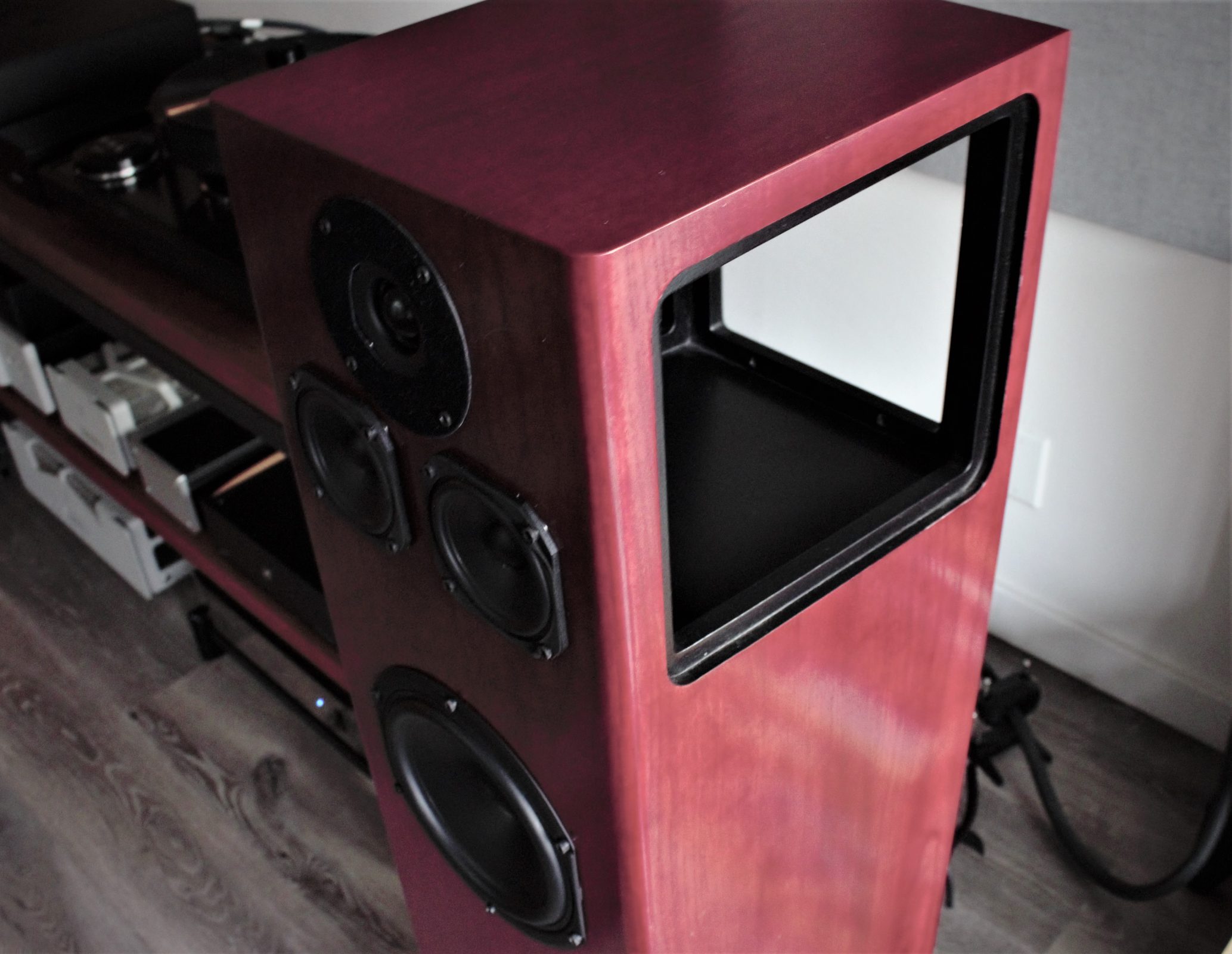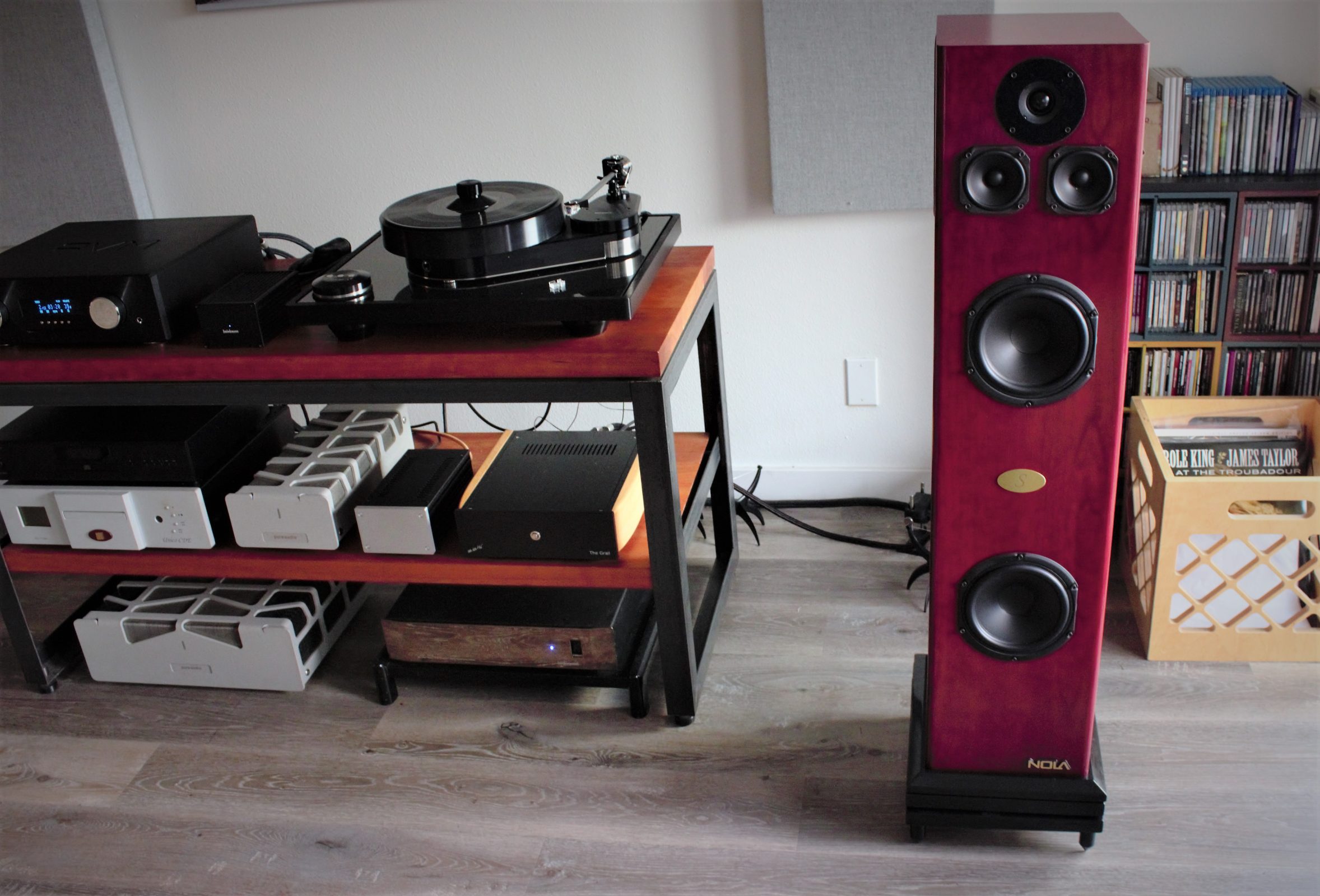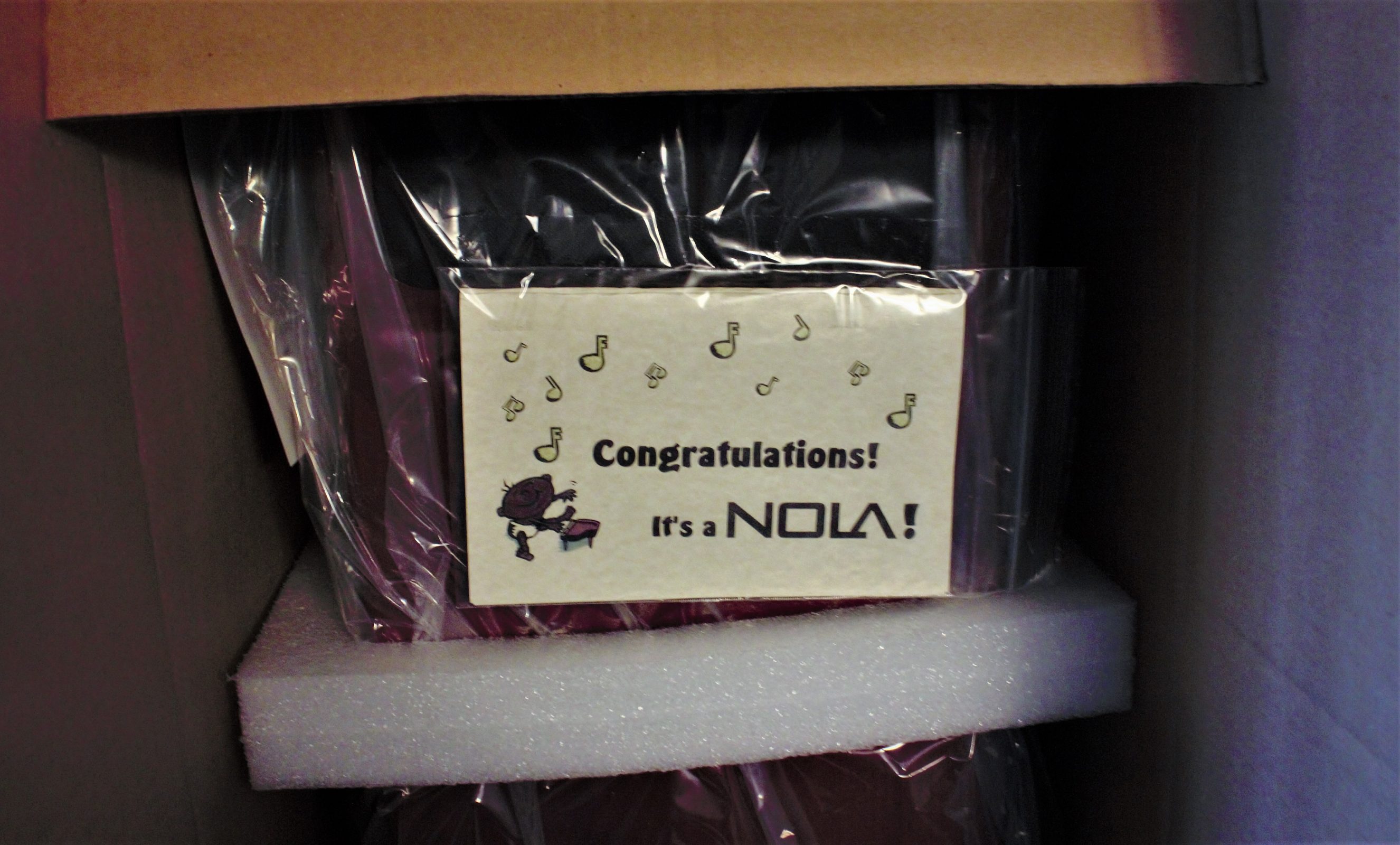

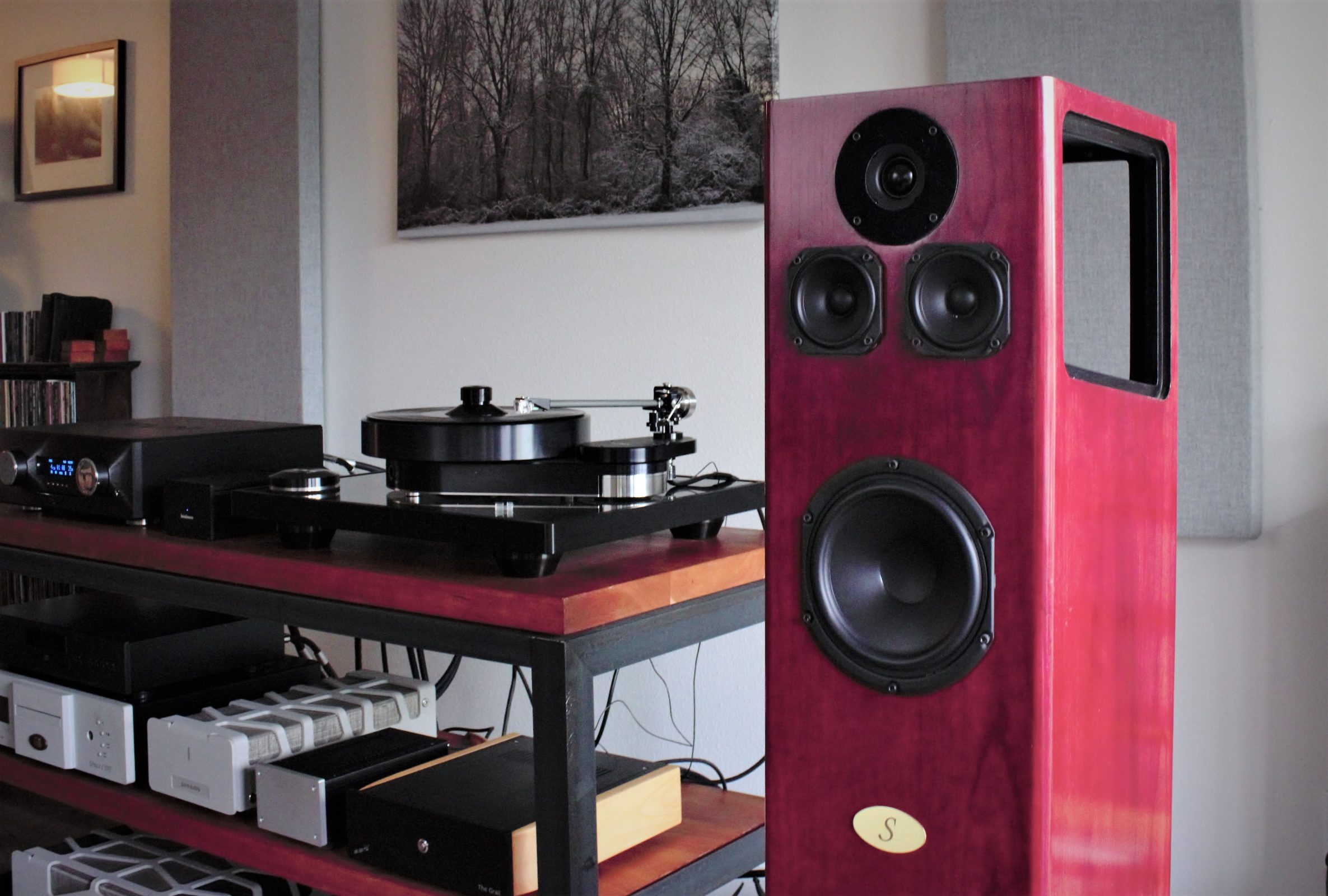
 It took me over two years to get the Nola Champ S3 loudspeakers in for review. I’ve been making sideways comments over the last few months about the state of international and domestic shipping of late, and how Covid has disrupted the high-end audio industry in numerous ways, and here’s a perfect storm of complications.
It took me over two years to get the Nola Champ S3 loudspeakers in for review. I’ve been making sideways comments over the last few months about the state of international and domestic shipping of late, and how Covid has disrupted the high-end audio industry in numerous ways, and here’s a perfect storm of complications.
But let’s start at the beginning.
On September 16, 2019, I met Scot Hull at an exhibit room at the Rocky Mountain Fest. He had just texted me to meet me in the Nola room, where we could meet with speaker manufacturing legends Carl and Marilyn Marchisotto from Nola, which is short for the company name of Nola from Accent Technologies. (I feel like I should mention the full name at least once.) I’ve been reading about the Marchisottos for what seems like decades -- I think they were part of the supporting cast of Sam Tellig’s columns for a while.
Before we go any further, I’d like to say in all honestly that one of the coolest things about this reviewing gig is that I’m finally meeting all audio heroes. That’s why high-end audio shows are such a blast -- you never know who you might bump into. (At my first high-end show, back in 1992, I bumped into Mr. Tellig/Gillett -- quite literally. Almost knocked him down, in fact.)
Despite being just a little starstruck, I immediately started discussing a possible review. We agreed on a compact but still substantial model, one that retailed for about $25K/pair. While I avoid larger speakers these days due to the challenging egress of my current digs, I noted the dimensions of the speaker and its relatively light weight and said yes, without hesitation.
Between that meeting and the present there were many changes in the game plan. First, Covid. Second, in the middle of the pandemic I moved across the country. So running down to the Nola factory, or picking the speakers from a high-end audio show, was no longer as feasible as it was when I lived in New York State. So it was largely my fault that I hadn’t yet received my Nolas. I’d just about given up on ever reviewing a Nola speaker after all these years, despite the fact that Carl kept sending me messages and emails every couple of months. No, we haven’t forgotten about you! We’re still working on sending you a pair!
By the time Carl alerted me that Nola was finally preparing my review speakers, a funny thing happened -- suddenly I was receiving a new model, the Nola Champ S3, and it was considerably less expensive at just $9,500/pair. I wasn’t disappointed at all -- I’d rather cover something brand new, especially before anyone else. Plus, the Champ S3 looked almost as big, with as many drivers, as that other Nola. The Champ S3, unlike yours truly, showed up at last year’s Capital Audiofest, and Eric and Dave confirmed that this new Nola speaker was truly something special. I was still as eager to take a listen as I was on September 19, 2019.
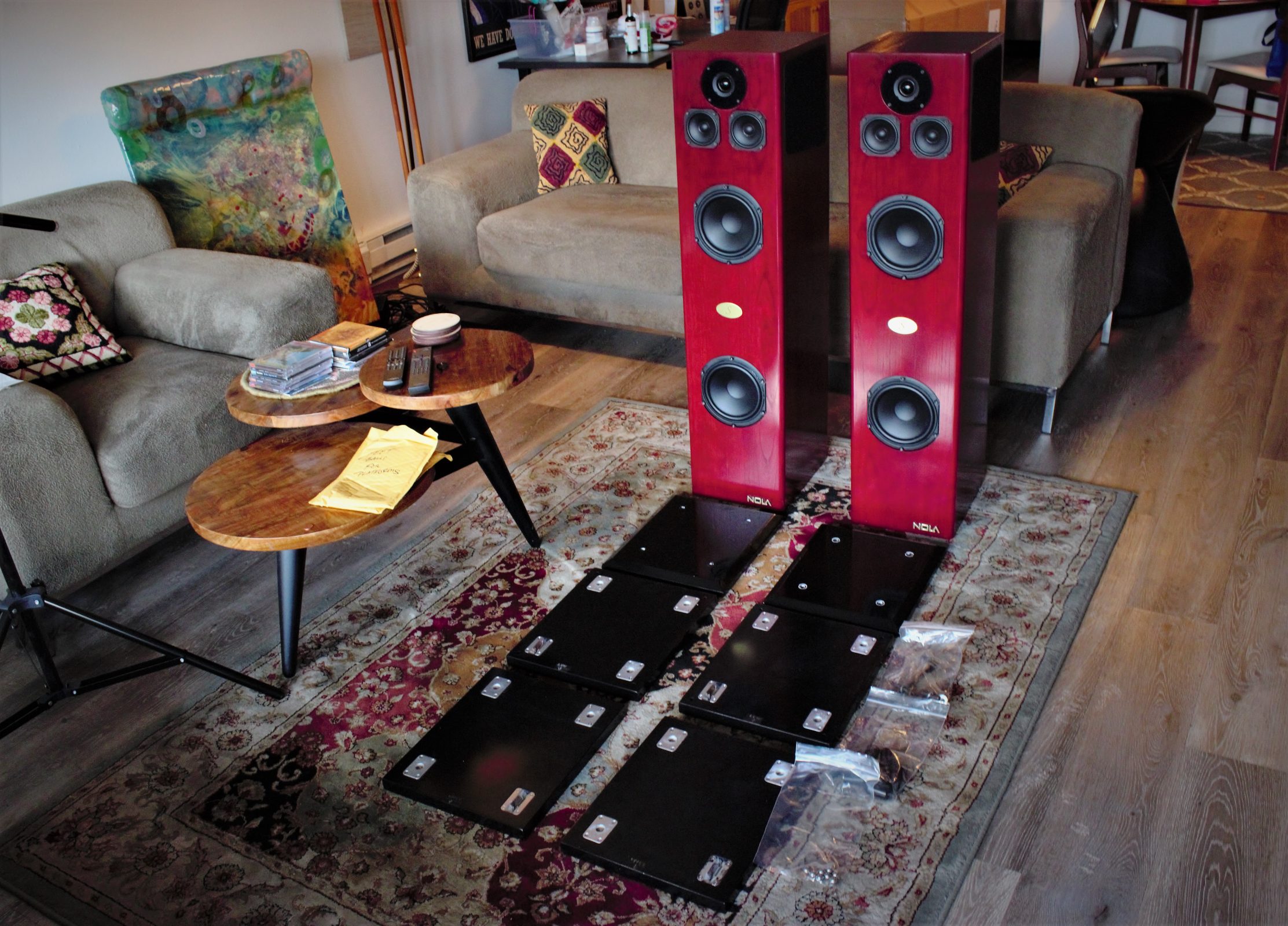
Inside the Nola Champ S3
As an audiophile who generally favors two-way loudspeakers, I found the driver complement of the Nola Champ S3 to be almost novel in its scope. The Champ S3 is a 3.5-way, with five drivers per side. The two woofers are each isolated in their own ported chamber with different tunings, using low-mass cones that weigh only 13g each. The two midrange drivers, placed side by side and operating as dipoles, join the silk-dome tweeter as a part of an open baffle array. I think the last time I personally tested a pair of speakers with laterally-arranged drivers were the AR-12s I had when I was a teenager.
If you’ve seen big Nola speakers in the past, you’ll be familiar with this design -- the upper portion of the Nola Champ S3 cabinet features three cut-outs on the sides and back, covered with traditional grilles that are intended to be removed during listening. Once you remove the grills, you’ll be able to see the backs of the tweeter and midrange. That’s not a problem, even for aesthetes, because the drivers are finished neatly and the wires are all dressed perfectly as they are routed down through tiny holes into the cabinet. Inside the cabinet, you’ll find two-board crossovers that are all hand-built using Mundorf caps.
The design of the Nola Champ S3 was inspired by his original and now legendary Alon 1 loudspeaker, and he wanted to bring it in at a price that was still reasonable–$9,500/pair in the standard American cherry finish. You can push the performance of the Nola Champ S3 even further by opting for the $3,000/pair for the double ball-bearing isolation bases, known as the Dynamic Isolation System, which Carl sent along with my review pair.
The stock Champ S3 comes with a solid base and spikes, but the optional ball bearing platform adds a few inches to the height. These platforms are simple in design -- two plates have directional grooves where you place the ball bearings, and then you simply make a ball-bearing sammich. With all of the individual pieces laid out for assembly, it looks like a daunting task, but once I looked at the instructions everything went together pretty quickly.
As Carl explains:
Once the optional stands were installed, I feared that the Nola Champ S3 was slightly less secure than before. The speakers do slide around on the bases, even with the slightest bump -- these are speakers that should be in rooms without a lot of human movement, if you know what I mean. Set them and forget them, literally, because you really do want to leave these alone and not put them in a heavy traffic area. I might be a little paranoid about this, but I once had a pair of bookshelf speakers damaged when the stands tipped over during the 1994 Northridge earthquake, and these were heavy, sand-filled stands with spikes driven far into the carpeted floor.
The Nola Champ S3 is also an easy-to-drive loudspeaker -- it’s 90dB with an 8-ohm impedance. Frequency response is 30Hz-30kHz. Despite their size and obvious talents on paper, each speaker weighs only 75 pounds and I had no issues with unpacking them, moving them around and even getting them up and down those evil, God-forsaken stairs in front of my front door. No injuries were reported during my time with the Champs.
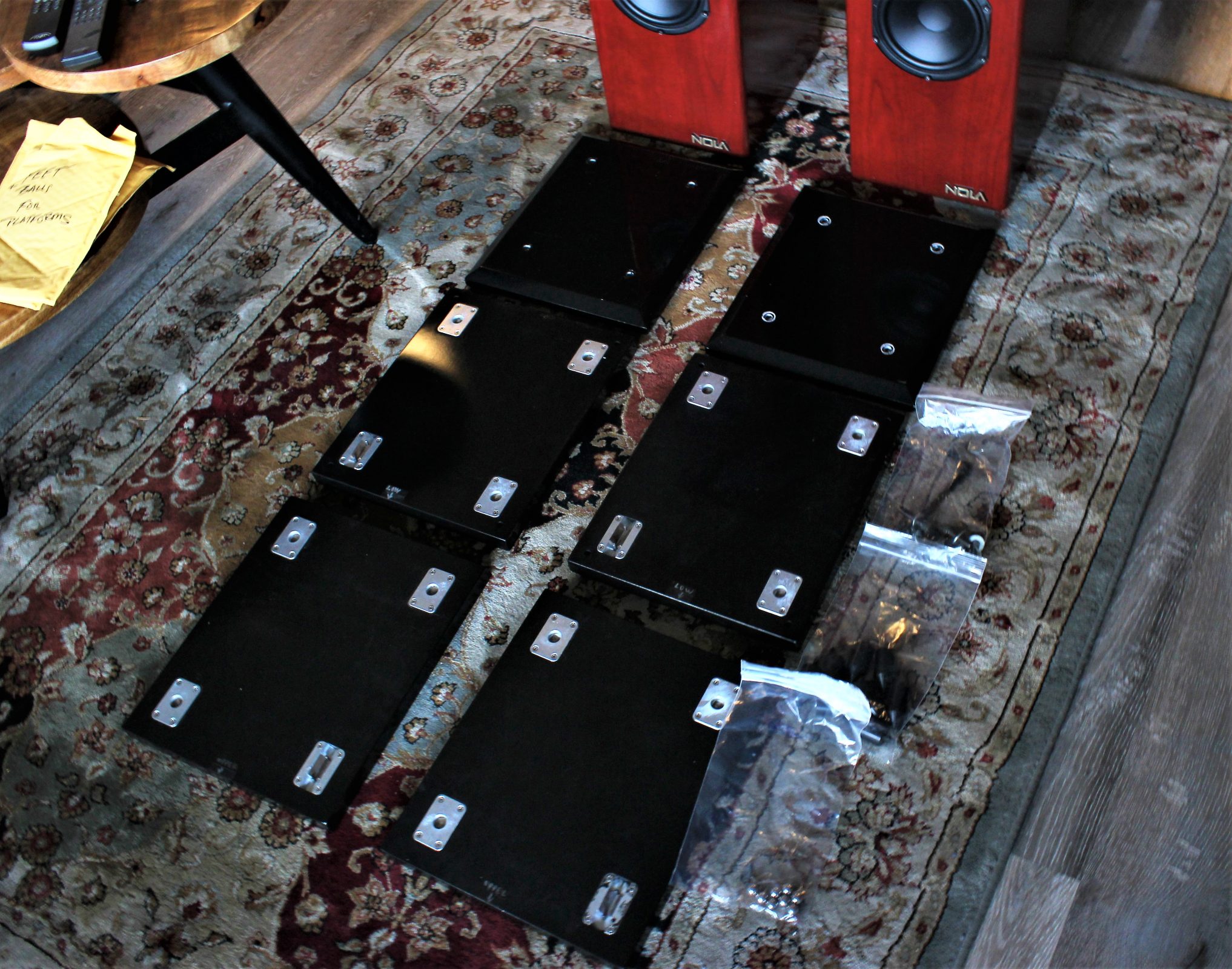
Nola Champ S3 Set Up
Setting up the Nola Champ S3 in my listening room required some experimentation, mostly because these towers have unusual design features that you’ll need to consider. First, the optional stands raise the height of the Champ S3s, almost to the point where I’m looking up at this tweeter way up there and I’m wondering how those high frequencies will ever get down to my ears. The Champ S3 is already a tall speaker, and the optional stand makes it more so.
Since my listening room -- basically a great room -- is open and flexible, I could account for that height by simply putting more space between my listening position and the Nola Champ S3. That worked, and I experienced a more coherent delivery. But I did listen to the speakers without the stands, and I was able to get satisfying results from a closer seating position. But -- and this is where we find out what those fancy rollerball stands do -- deep bass and stability in the imaging lost some of its wow! If you have a smallish room for the Champ S3s, you might have to try them with or without the stands to dial in the balance. But if you are even considering the optional stands, just get them and don’t look back.
Another consideration is that open baffle top section of the Nola Champ S3 loudspeakers. There is no doubt about it, the grilles should be removed for listening. The obvious advantage is an airier treble, which seems like the main reason for this design feature, but I found that removing the grilles also expanded the sweet spot to the point where I could get up and move around and still feel like I had a firm grasp of the Nola’s talents. I feel like it’s been years since I lauded a pair of loudspeakers for their enormous sweet spot, but here we are.
Finally, Carl Marchisotto recommends facing the Nola Champ S3 far enough apart and straight ahead, with no toe-in. I always prefer to toe speakers in, at least a little, despite what manufacturers tell me. But son of a gun, Carl’s right. When toed in, even slightly, the Champ S3s lateral image suffers a bit, with the sound coming mostly between the towers. When firing straight ahead, the Nola’s soundstage goes wide. I’m talking mid-’80s Polk SDA, close to 180 degrees, what’s the sound coming from the side, is this multi-channel kind of wide. Not gimmicky wide, but occasionally I would get a chill when a sound quickly flanked me and came in for attack.
Carl Marchisotto goes into a little more depth on placement:
“This is different from opposite priorities say in a Studio Monitor or maybe some other audio brands, where it may seem that revealing recording imperfections is the priority. Regarding placement, say in the 13W x 18L listening room at NOLA, the Champs are placed along the long wall- front baffle about 4 feet out from front wall. Seated against rear wall (this is fine with these designs) about 8 feet away from the front baffle with Dynamic Isolation System, in place the imaging is fine. We find the sound is always better with the Dynamic Isolation System in place.”
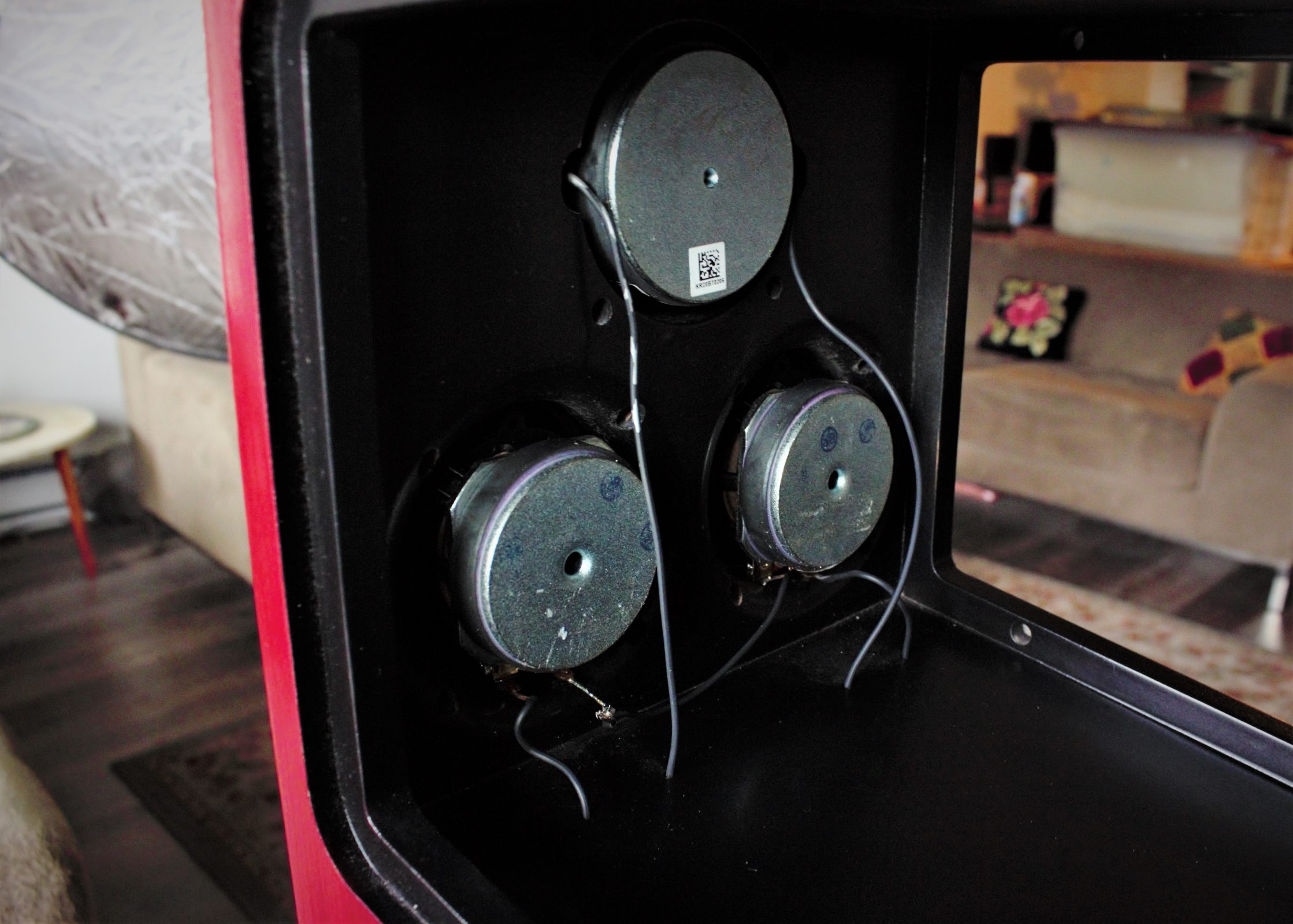
A Quick Talk with Carl Marchisotto
Throughout this long review process, Carl and I were able to talk about the Nola Champ S3 design in some detail. After hearing about this new model, especially in terms of Nola’s extensive lineup, I asked him why this speaker, and why now?
“I also wanted the Nola Champ S3 to be easy to drive with tubes or solid state, hence the 90dB sensitivity and 8 ohm impedance. I decided to use low-mass, low coloration drivers throughout in order to preserve the life like attack and decay of live music. I ended up with a 5-driver array with twin woofers in separate chambers, individually tuned. Twin open baffle dipole midranges and our best silk dome tweeter complete the array.”
“A surprise to us was that this speaker has worked both in small rooms, say 13 x 18 ft and up to a huge 42 x 47 ft as at the Capital Audiofest Show.”
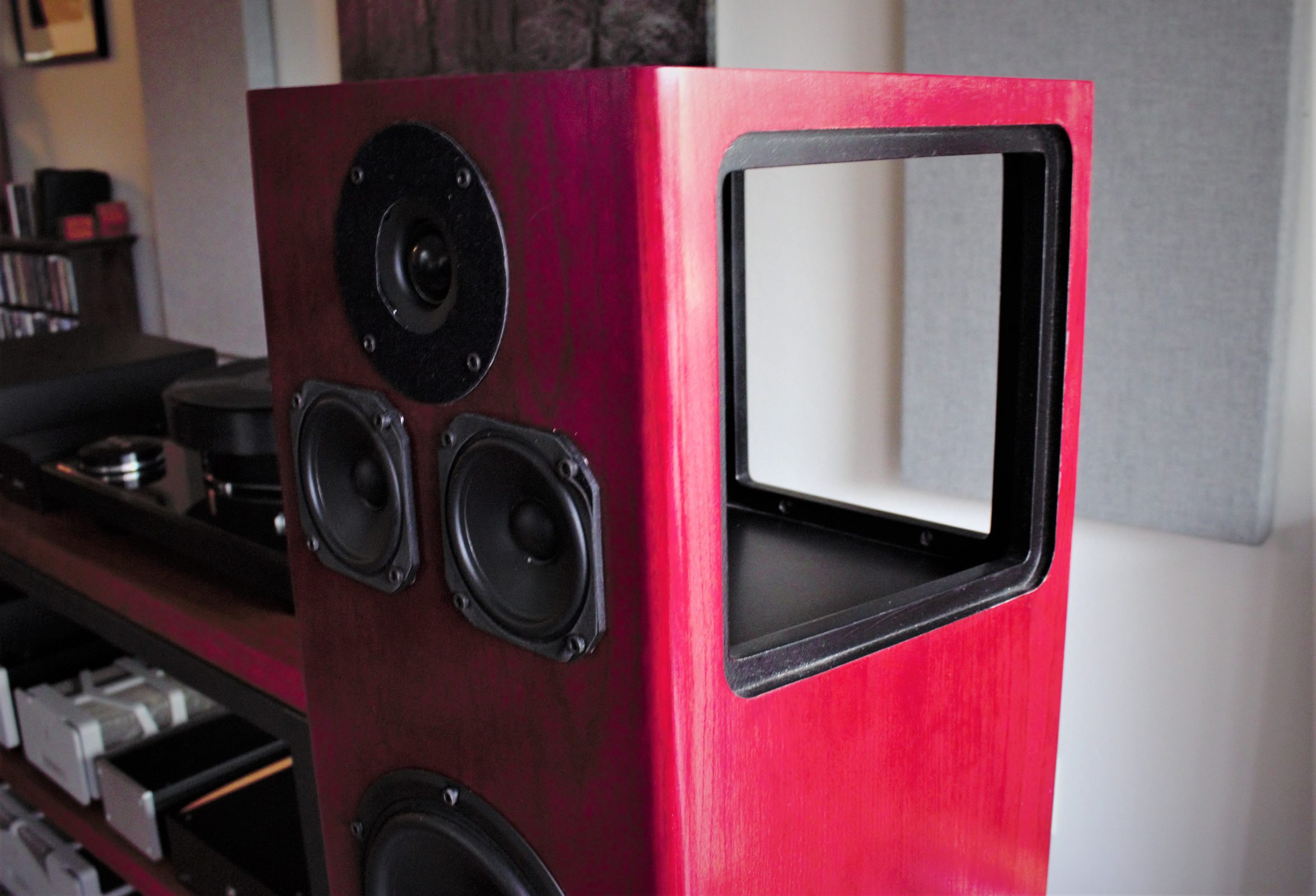
Nola Champ S3 Sound
As I mentioned, I don’t listen to a lot of tall towers with five drivers on each side. It’s not my normal type of speaker. But my first impression of the Nola Champ S3, once properly set-up, was that exact sense of coherence. Yeah, I’m that guy who loves two-ways because coherence, coherence and more coherence, but the Champ S3 sounded so natural and balanced that I forgot it had so many round things happening on that front baffle.
Top-to-bottom coherence is important when you have a speaker that can really deliver on the lowest frequencies. Yes, the Champ S3s were able to go low in my listening room with relative ease -- and in the Lab12’s case, a modest amount of power -- without overloading the room and waking up that bastard of a 200Hz bass node that occasionally pops up from the rear wall, near the floor, and behind the speakers. That was balanced, of course, against that open extension at the top, and I never felt like I was focusing on one part of the frequency range or another. I was conscious of listening to the whole and embracing the impact of everything at once.
But let’s go back to that bass response. I’ve been obsessed with a couple of recent recordings that create an immense soundscape with huge, rumbling low frequency monsters poking at the ground near the horizon -- Hildur Gudnadottir’s soundtrack for Chernobyl and Hans Zimmer’s soundtrack for Blade Runner 2049. The Nola Champ S3 was able to distinguish between a simple low frequency sound in the room, a note or a beat, and one that might be located in the next room, where you feel it mostly with your feet. A sound, like you’d hear while standing in a nuclear reactor facility. Or an ungodly blast of dubstep noise that shakes your fillings loose. It’s not just sound, it’s feeling and pressure.
But when I stopped with the sonic fireworks, the Nola Champ S3 loudspeakers still impressed me with their ability to sound delicate whenever necessary. Over the last year I’ve been listening to Japanese pianist Satoko Fujii and her bi-monthly releases with Libra Records, sometimes by herself and sometimes with collaborators, and the one thing these recordings all possess is uncanny detail amidst an achingly pristine recording. Fujii mostly plays a prepared piano, but she engages in a more active exploration of this fascinating approach to the keyboard, often playing with one hand on the keys and one hand fiddling around inside the box.
On lesser transducers, this style can sound like a mere duet. The Nola Champ S3 loudspeakers could easily demonstrate that no, this is two hands on one instrument doing very different and separate things, and there is a whole that is forged by the vibrations within the piano, and everything is connected. Fujii’s performances are usually live improvisations and obscuring these details would rob the recording of its immediacy and pure imagination.
That’s Big Boy Speaker stuff right there, dealing with the dichotomies in music-making, separating the real from the synthesized, the live from the overdubbed, and always informing the listener about the sheer truth of the performance.
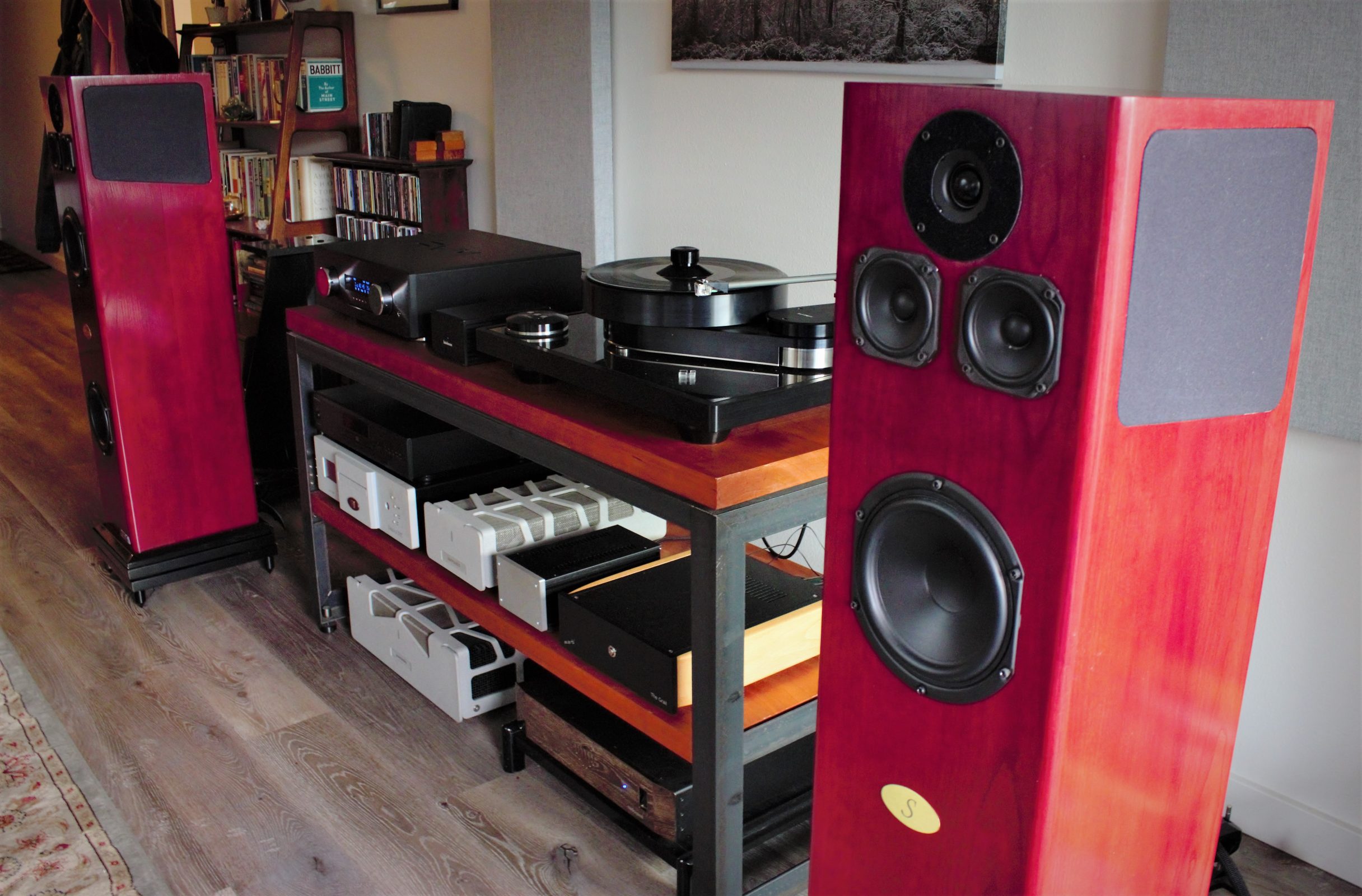
Conclusion
Was the Nola Champ S3 worth the two-year-plus wait? Absolutely.
While the Champ S3s were in my system, I had that sublime feeling that everything else that made its was through my hi-fi had to first measure up to the Nolas. These are large speakers that throw out a big soundstage, have tremendous power in the lower registers while maintaining a delicacy and precision that’s uncommon at this substantial but still reasonable price point.
That open baffle design is executed with mastery and flair, resulting in a treble balance that just seems untethered by gravity. The Champ S3 is the loudspeaker that gently explained to me that the dispersion characteristics of midrange drivers and tweeters are crucial when it comes to giving you the sense of an unlimited treble response, one that ventures out from the space between the speakers and heads out in all directions at once, rewarding the listener with huge dollops of natural decay and transient responses that seem to dig into your brain and make indelible impressions.
After my time ended with the Nola Champ S3 loudspeakers, I spoke once again to Carl Marchisotto about meeting once again, in person, at any one of the upcoming high-end audio shows. He brought up the Pacific Audiofest in Seattle in August, and told me he was, once again, introducing a new speaker to the line-up. Of course I will be there. Now that I’ve finally heard one of the Nola designs, I can’t wait to hear another. Highly recommended.

